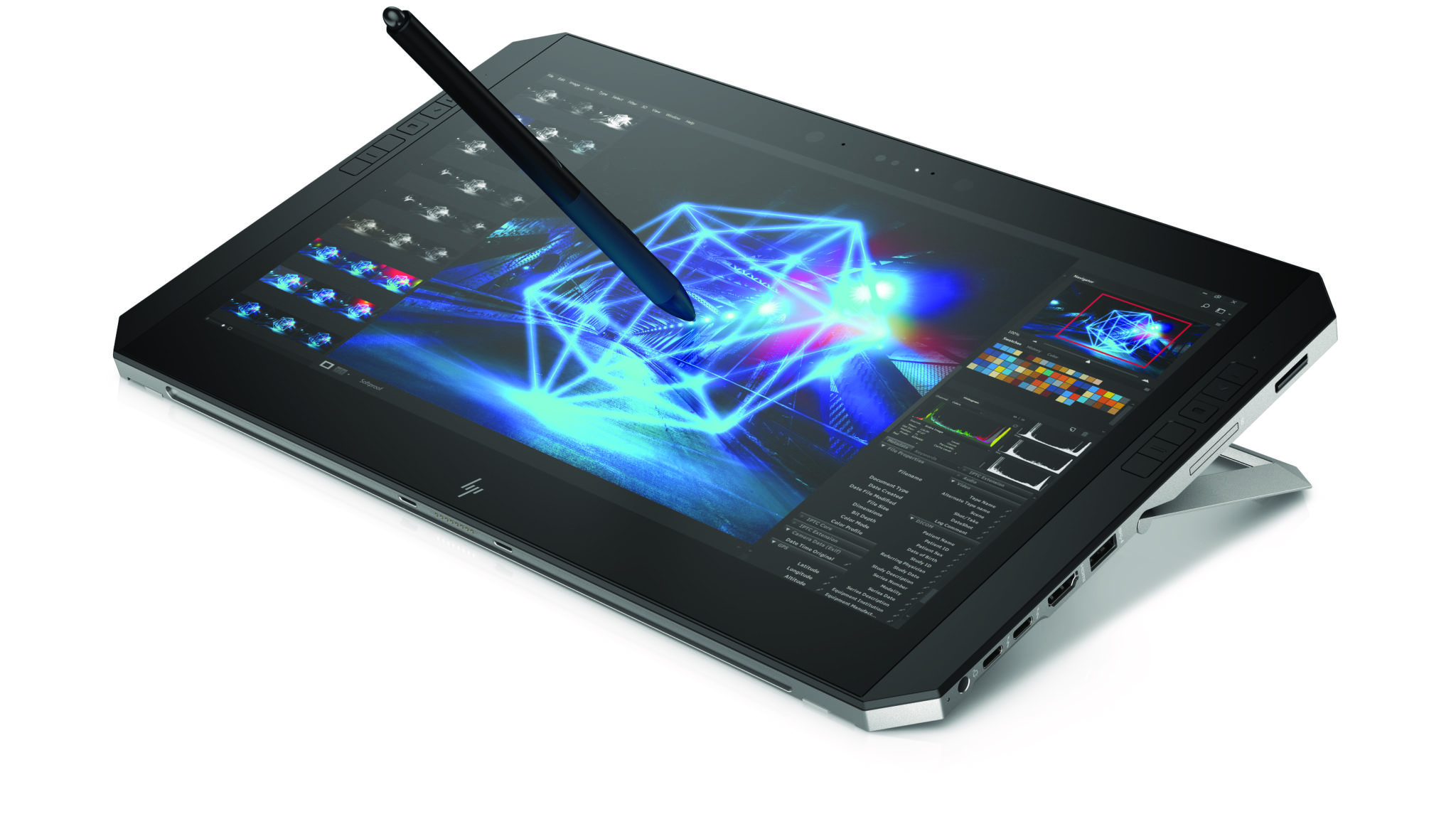HP announced the ZBook x2, a new tablet-style PC with detachable keyboard and high-end performance options, at the Adobe Max conference in Las Vegas today. Positioning the X2 as a more powerful competitor to consumer-oriented options like the Microsoft Surface Pro and iPad Pro, HP is marketing it as a “detachable workstation.”
The result of two years of development during which HP polled artists about what they needed from a professional workstation-class detachable PC, the ZBook x2 was built to maximize sheer performance, which HP reps said was the most common pain point for creative users. Accordingly, the x2 is specifically designed to handle the kind of drawing and painting tasks that require precise physical input to create Photoshop documents that are built with dozens of RAM-chewing image layers.
Under the Hood
The ZBook x2 runs Windows 10 Pro and comes standard with a 14-inch UHD (3840×2160) multitouch anti-glare display, with an upgrade to a calibrated HP DreamColor 10-bit display reaching 100% of Adobe RGB color available as an option for the first time on a ZBook. In addition to HDMI and USB 3.0 jacks, it includes two USB 3.1 Type-C Thunderbolt 3 (DisplayPort 1.2) connectors. With a Thunderbolt 3 ZBook dock ($229), it can also drive dual external 4K displays.
Processor options include a range of two-core and four-core Intel Core i5 and i7 processors with onboard graphics, topping out at an i7-8650U CPU running at 1.9 GHz or up to 4.2 GHz via Turbo Boost. The system supports up to 32 GB of dual-channel RAM, and the discrete graphics option is not too shabby, either — an Nvidia Quadro M620 with 2 GB of dedicated GDDR5 memory. HP says its Z Turbo Drive PCIe NVMe M.2 storage outperforms a SATA SSD by 6x.
A Hefty Hunk of Tablet
But the ZBook x2 can’t compete purely on portability. Even at a lithe starting weight of 3.64 pounds (1.65 kg) in tablet mode, the ZBook x2’s aluminum and die-cast magnesium body weighs more than twice as much as a 12.9-inch iPad Pro or an entry-level Surface Pro, and the tablet portion by itself is a relatively chunky 1.46 cm thick. (HP has built a stand into the back of the tablet, allowing it to sit on a table at an appropriate angle for drawing without the keyboard attached.) Snap on the keyboard and you reach 4.78 pounds (2.17 kg), which is about what you’d expect from a powerful notebook PC.
Smooth Like Butter
HP aims to make up for that heft in usability. Beyond the obvious benefits of processor horsepower, HP has licensed Wacom’s EMR technology for a pressure-sensitive and tilt-aware pen that draws power through contact with the screen. In a nice touch, it has a dedicated eraser on one end that works as you’d expect. We took it for a quick test drive and found the experience of drawing on the ZBook x2’s touchscreen to be as frictionless as company reps claimed.
Extra engineering went into the screen, which needed to operate at a higher base luminance in order to achieve 300 nits of brightness despite the anti-glare coating, HP reps said. The Bluetooth keyboard, too, is more than an afterthought. The design is borrowed from the HP ZBook Studio’s keyboard, including backlighting and function-key control. It stays connected when separated, allowing users to hit keyboard shortcuts even when working in tablet mode.
Additionally, HP has included a number of shortcut buttons on the tablet itself. They come assigned to common tasks in Adobe Creative Cloud software but can be reprogrammed to match your exact needs.
Adobe In Mind
Speaking of Adobe, HP clearly sees the Creative Cloud crowd as the key demographic for the ZBook x2. New systems come with a 20% discount for one-year subscriptions to Creative Cloud, and the company will also offer customized configurations that include a Creative Cloud subscription in the price and are tuned for different categories of user: photographers, digital artists, video editors, or pro digital artists and photographers.
Dual-core ZBook x2 units are expected to begin shipping in December, the company said, with a starting price of $1,749. Quad-core systems are slated to follow in January.

